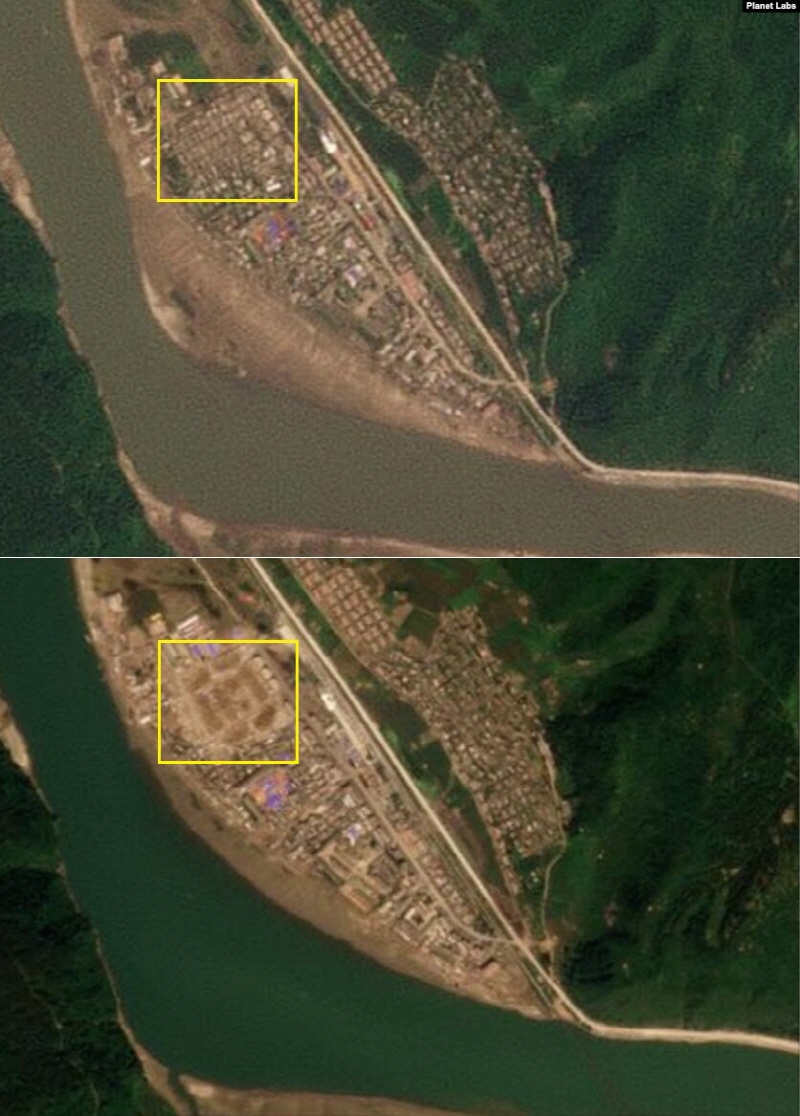The recent floods in northern North Korea have washed away housing land equivalent to 100 soccer fields, leaving a vast area in ruins. Satellite imagery has confirmed the start of recovery operations, but progress appears to be slow, Voice of America reported on September 5.
Extensive flood recovery efforts have been detected in Uiju County, North Pyongan Province, and the surrounding areas of Wiwha Island in North Korea.
Satellite images taken by Planet Labs on August 28 show a large tent village, presumably housing workers involved in the recovery efforts. These tents, which are blue, orange, and white, are so numerous that they are easily visible from space.

Analysis of the satellite data indicates that this tent village began forming in mid-August. Surrounding the tents, large, cleared areas are visible, suggesting that homes destroyed by the floods have been demolished to create this open space.
In particular, on the west side of Wiwha Island, hundreds of homes have disappeared, replaced by vast open land.
An analysis of satellite images by VOA shows that at least eight areas in Uiju County and Wiwha Island have transformed from residential zones into empty spaces after the floods. The total area of the lost residential land is approximately 670,000 square meters (165.6 acres), the size of 100 international soccer fields, leading to the estimated loss of thousands of homes.
Given the scale of destruction in Uiju County and Wiwha Island alone, it is likely that similar damage has occurred in other regions. For instance, an area in Sichung-eup, Jagang Province, which had residential housing as of August 8, was reduced to an empty space by September 3.
As investigations extend to other regions, more washed-out areas are expected to be identified. Moreover, if undemolished damaged buildings are taken into account, the actual area affected by the floods may be even larger.

Earlier, North Korean leader Kim Jong Un publicly condemned South Korean media reports that estimated the number of deaths and missing persons from the floods at 1,000 to 1,500.
Koo Byung-sam, spokesperson for South Korea’s Ministry of Unification, suggested that the North’s harsh response may be an attempt to shift blame for the severe flood damage and rising public discontent onto external factors.
“North Korea appears to be trying to minimize public dissatisfaction by blaming external forces while facing a crisis that requires mobilizing all national resources to recover from the massive flood damage,” Koo said.
Most of the flood-affected areas remain cleared after the demolitions, with no signs of new housing construction. This indicates that it may take considerable time for the displaced residents to regain permanent housing.
For over a month, flood victims have been living in temporary tents, and this situation is expected to continue for the foreseeable future.
Despite offers of international assistance, North Korean authorities have stuck to their policy of self-recovery.
BY YOUNGNAM KIM [kim.youngnam@koreadaily.com]



![Green card interviews used as decoy for ICE arrests U.S. Immigration and Customs Enforcement (ICE) agents arrest a man after a hearing at an immigration court in Manhattan, New York, on Oct. 27. [REUTERS]](https://www.koreadailyus.com/wp-content/uploads/2025/12/1226-ICE-100x70.jpg)
